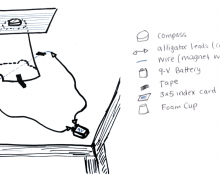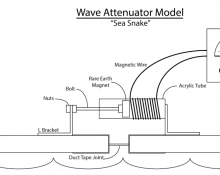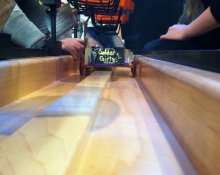Wave Attenuator Unit Overview
1. Students will demonstrate energy transfer through space using electromagnetic phenomena.
2. Students will design a model that demonstrates that a current-carrying wire can induce magnetism.
3. Students will define and build an electromagnet.
4. Students will demonstrate electromagnetic induction.
5. Students will describe and model the energy transfer and transformation in a wave attenuator.
6. Students will build a wave attenuator using a diagram and selected materials.
7. Students will test the model wave attenuator they built.
8. Students will investigate variables that may affect the output of an energy conversion device (wave attenuator).
9. Students will interpret data to identify which variables increase electrical output for these model wave attenuators.
10. Students will communicate results from scientific inquiry to identify factors that are important to optimizing the design of a wave attenuator.
Through a series of learning experiences, students will experiment with the basic concepts of motion to electrical energy transformation. Students start by building a series of models that demonstrate the interactions between magnetic and electric fields. Students then apply this background knowledge to convert ocean wave power into electricity... View full description >>




